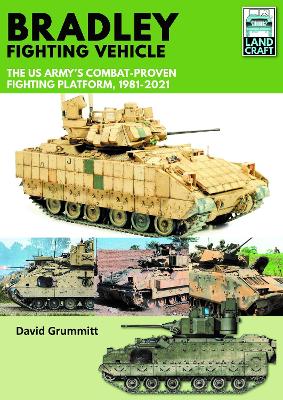Land Craft
2 total works
The Stryker interim combat vehicle was a stop-gap measure, designed to meet the needs of the United States to project its military force quickly by air into hotspots around the world. In 2003 it had its baptism of fire in Iraq and has since proved itself an integral part of the US's warfighting capability and now, two decades into its service, the Stryker has been adapted to face the new threat of a resurgent Russia.
This volume in the LandCraft series of modelling guides examines the Stryker and LAV III in US, Canadian and New Zealand service. In addition to describing in detail the design, development and operational history of the Stryker and LAV III, David Grummitt gives a full account of the wide range of modelling kits and accessories available and features six builds covering the most important variants. Detailed colour profiles provide both reference and inspiration for modellers and military enthusiasts alike.
This volume in the LandCraft series of modelling guides examines the Stryker and LAV III in US, Canadian and New Zealand service. In addition to describing in detail the design, development and operational history of the Stryker and LAV III, David Grummitt gives a full account of the wide range of modelling kits and accessories available and features six builds covering the most important variants. Detailed colour profiles provide both reference and inspiration for modellers and military enthusiasts alike.
The Bradley Fighting Vehicle was developed in the 1970s to counter the new Infantry Fighting Vehicles of the Soviet Union and its Warsaw Pact allies. Designed to survive the imagined high-intensity, Nuclear, Biological and Chemical (NBC) battlefield of the Cold War, it became, alongside the M1 Abrams Main Battle Tank, the mainstay of US armoured forces during the 1980s. As the Cold War ended, however, it would go on to prove its worth on other battlefields. During the First Gulf War the Bradley would destroy more Iraqi AFVs than the Abrams, while during the 1990s it would prove itself an effective weapons system in the missions to Bosnia and Kosovo. During the 2003 invasion of the Iraq and the fighting that followed it confirmed its reputation as a versatile and deadly AFV.
This volumes examines the development and service history of both the M2 Bradley Infantry Fighting Vehicle and the M3 Bradley Cavalry Fighting Vehicle. The various modifications and improvements over its long service history are described, as is the experience of the soldiers who have fought alongside and in it during the past three decades. The book also gives a full account of the wide range of kits and accessories available in all the popular scales and includes a modelling gallery covering the most important Bradley variants. Detailed colour profiles provide both reference and inspiration for modellers and military enthusiasts alike.
This volumes examines the development and service history of both the M2 Bradley Infantry Fighting Vehicle and the M3 Bradley Cavalry Fighting Vehicle. The various modifications and improvements over its long service history are described, as is the experience of the soldiers who have fought alongside and in it during the past three decades. The book also gives a full account of the wide range of kits and accessories available in all the popular scales and includes a modelling gallery covering the most important Bradley variants. Detailed colour profiles provide both reference and inspiration for modellers and military enthusiasts alike.

